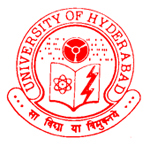Mass spectrometric analysis and engineering of N-glycosylated proteins
Prof. Dr. Michael Hippler
Although N-glycosylation is a major post-translational modification step during maturation of proteins in eukaryotes, the study of the N-glycosylation pathway occurring on proteins produced by C. reinhardtii has received very little attention so far. We are interested in C. reinhardtii as a cell factory for the production of biopharmaceuticals. Therefore information regarding its glycosylation capability is needed to support such applications. In order to shed light on N-glycosylation in C. reinhardtii, we currently carrying out glycoproteomic studies of various cellular compartments, such as the chloroplast and the plasma membrane. Moreover, we are focusing on proteins secreted into the culture medium.
For the identification of glycosylated proteins we employed two complementary strategies. The first approach involves the treatment of glycopeptides previously enriched by affinity chromatography (Concanavalin A) with the glycosidase PNGase F. This enzyme cleaves N-linked glycans and as a consequence deaminates corresponding asparagine residues to aspartic acid. Hence, the PNGase F mediated hydrolysis of glycans leads to a mass shift of +1 Da compared to a non-modified peptide. Since deaminations may also occur spontaneously in vivo or during sample preparation, we carry out the deglycosylation in the presence of 18O labeled water. Due to the incorporation of heavy oxygen during hydrolysis instead of 16O as in normal water a mass increase of +3Da is observed, leading to more robust identifications. Using this strategy 77 distinct peptides harboring the N-glycosylation N-X-S/T consensus amino acid sequence could be identified.
The aforementioned approach permits the identification of glycosylated peptides, but does not provide information regarding the composition of glycans. The second approach overcomes this limitation as intact glycopetides are analysed. For this we employ a specific technique termed ‘in-source collision induced dissociation (IS-CID)’. Here, glycopeptides entering the MS are continuously partially deglycosylated by application of an ion accelerating voltage in the entry region of the MS. Consequently, the resulting MS1 spectra contain the signals of individual peptides with varying glycan chain length. Due to the high-resolution of MS1 spectra recorded in the Orbitrap we can (with limitations) determine the nature and sequence of the sugar residues of glycans. To obtain peptide sequence information, glycopeptides are then selectively fragmented by conventional targeted collision induced fragmentation (CID). Candidates for fragmentation are identified ‘on-the-fly’: The MS is programmed in such a way, that it searches MS1 spectra for ion pairs differing by exactly 203.0794 Da corresponding to the exact mass of an N-acetyl-glucosamine residue, which is most likely to be found in the core region of a glycan close to its attachment site. Following this strategy 27 N-glycosylated peptides could be determined, of which 11 peptides were also recognized by the 18O labeled procedure.
Production of sugars and hydrocarbons from algae
In an EU sponsored program entitled “Sustainable PoLymers from Algae Sugars and Hydrocarbons” (SPLASH) we part of a large consortium composed of 20 partners that aims to develop a new biobased industrial platform using microalgae as a renewable raw material for the sustainable production and recovery of hydrocarbons and (exo)polysaccharides from the species Botryococcus braunii and further conversion to renewable polymers. Two bioproduction platforms will be explored: (1) green alga Botryococcus braunii on its own and (2) the green microalga Chlamydomonas reinhardtii, to which the unique hydrocarbon and polysaccharides producing genes from Botryococcus will be transferred.



